#Wenshu Monastery
Explore tagged Tumblr posts
Text
Chengdu 2017
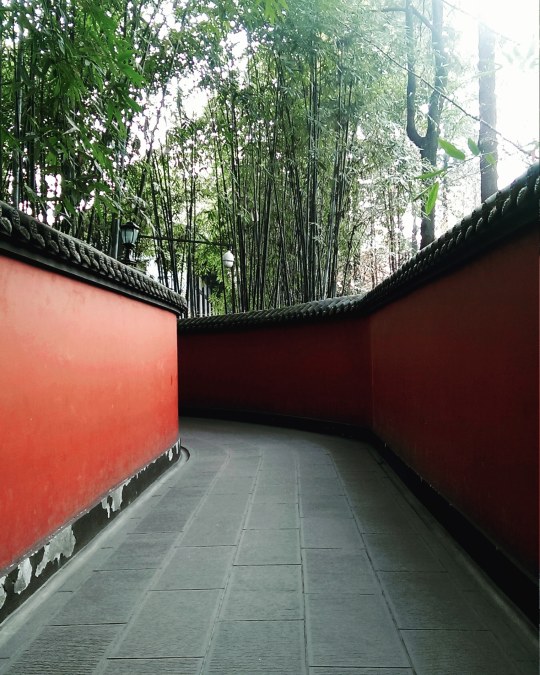
8 notes
·
View notes
Text
Buddhism was founded in India around the 6th to 5th century B.C.
It is said that the founder of Buddhism was Sakyamuni.
About the 2th century,Mahayana Buddhism entered Central China,inhabited by the Han nationality.
The Three Precious Treasures include the Buddha,the Dharma(Law 0r Way)and the Sangha(the Monastic Order).
Buddhism has always co-existed with Confucianism and Daoism.
Buddhism has and Bodhisattva statues have been placed for worship in monasteries.
Up to the present time.Hinayana Buddhism (Lesser Vehicle)is still prevalent as in the regions inhabited by Dai nationality.
Their mutual co-existence of the tradition has produced a religion with distinct Chinese characteristics.
In addition to Sakyamuni, many other Buddhism has and Boddhisattvas statues have been placed in the same monasteries
As Buddhism spread throughout China,Buddhist monks added Chinese characteristics to the Daochang and accordingly placed different Buddhas in the different Daochang in China.
The four major sects(Tiantai,Huayan,Jingtu and Chan)appeared between 581 and 755A.D., and they had considerable influence in both China and Japan.
This eight-fold path consists of right knowledge, right thought,right speech,right behavior,fight livelihood,fight effort,right mindfulness and right concentration.
By following the eight-fold path,Buddhist followers aim to attain Nirvana, a condition of eternal and tranquil bliss that is beyond the limits of death,rebirth,thoughts and feelings.
Sakyamuni was a prince.When he was young, he sadly saw that people suffered in poverty,pain,sickness and death.Around the age of 29,the prince made his break from the material world and plunged off in search of enlightenment.
As the story goes,Sakyamuni came to a fig tree.He sat beneath it and then he slipped into deep meditation.Afterwards he achieved enlightenment and became Buddha.
The four noble truths��life is suffering,the cause of suffering is desire, the answer is to quench desire, and the way to this end is to follow the eight-fold path.
Mahayana Buddhism(Greater Vehicle)holds that the fate of an individual is linked to the fate of all others.The Buddha doesn't float off into his own Nirvana,leaving other people behind. He continues to exude spiritual、help to those see—king Nirvana.
Hinayana(Lesser Vehicle)holds that the path to Nirvana is an individual pursuit.People who seek Nirvana must tread its path on their own.
Tiantai was the earliest sect of Chinese Buddhism.It was founded by Zhiyi during the Sui Dynasty.Zhiyi took the Lotus Sutra as his basis; he classified the other Buddhist sutras into five periods and eight types of teachings and he also emphasized both meditation practice and scriptural study.
Huayan Sect was established in the 7th century by a Chinese monk,Fa Zang,of the Tang Dynasty.This sect reached Korea in the late 7th century,and Japan between 725 and 740.
Chan Buddhism is a sect of Mahayana Buddhism.The“Channa” is a transliteration of the Sanskrit term“dhyana”.which means“meditation".It is said that the founder of the Chan Buddhism was Bodhidharma who was known to the Chinese as Da Mo.This sect emphasizes meditation,it holds that the universal“Buddha, nature” is immanent within ourselves.
Jingtu Buddhism is based upon a number of Indian Buddhist texts describing a pure land to the west.Especially it is designed for those, who devoutly chant the name of Amitabha and for laypersons who find traditional Buddhist moral rules and meditation discipline too strict.
The Tibetan people believe in Buddhism.It is called Lamaism.It spread into Tibet during the reign of Tubo King Songtsan Gambo in the 7th century.By the end of the 14th century,the Tibetan Buddhism had a variety of sects, including the Red Sect,the White Sect and the Yellow Sect.
Buddhism was first introduced to China about 65 B.C.by two Indian monks who had been invited by Emperor Ming of the Han Dynasty to establish a monastery in China.In the beginning,Buddhism did not have much influence in China due to the prevailing traditional Chinese culture.
At the early stage,Buddhist word and ideas, as well as its artistic forms, had to be translated into Chinese terms.One early solution was to employ Daoist terminology,and this had the advantage of sounding familiar.
Another solution was not to translate at all but to transliterate,that is,to employ Chinese characters to approximate the sound rather than the meaning of the original word.Transliteration was most suitable for reproducing foreign proper names in Chinese, and this became the standard practice continued to this day.
Puxian(Samantabhadra)symboHzes infinite virtue and is represented riding a white elephant.“Puxian”is considered to be one of Sakvamuni’s close assistants.In some monasteries, the statues of Sakyamuni.Wenshu and Puxian statues are placed in the Grand Buddha Hall.
Amitabha is also called Jieyin Buddha.Along with Sakvamuni.he attained the state of Buddha-hood through his perfect enlightenment.Amitabha takes charge of the Buddhist Western Paradise.and his work is to usher sentient beings into the paradise when they pass away.
The statue of Maitreya is usually placed in the first main hall of a monastery.When Buddhism entered China.Maitreya quickly took on Chinese characteristics and became popular among the people.
Guanyin has 33 various images.including an image with 1000 hands,an image with 11 faces. and an image with 48 arms.Guanyin serves as the Bodhisattva of perfect compassion and kindness,helping the needy and relieving the distressed.His infinite Buddhist power is known in every household due to the popularity of the famous Chinese literary classic,The Pilgrimage to the West.
According to the Buddhist classics.Wenshu was the third son of the Holy King in charge of reincarnations. Legend has it that as Buddhists entered China, Wenshu appeared on Mt.Wutai. Wenshu holds a sword that symbolizes his infinite Buddhist power and perfect wisdom.
According to the Buddhist classics, during the period from the Nirvana of Sakyamuni to the advent of Maitreya, Dizang Bodhisattva vowed to save all beings from suffering in the Six Paths.He vows not to achieve Buddhahood until all the Hells are empty, and is thus therefore referred as the King of Hell.
The Four Heavenly Kings are depicted as the Four Warrior Attendants(Vajras).Their origin stems from an Indian Buddhism legend,and these kings are able to drive out evil and monsters.protect Buddhas, and assure favorable conditions for the growth of crops each year.Therefore, their images are usually placed in the first main hall of a Buddhist monastery.
According to Buddhist classics,Sakyamuni's disciples are sixteen Arhats.They are instructed by the Buddha not to ascend into the Buddhist Western Paradise,and instead they are asked to reside in the world, the human beings take care of them, and in return the Arhats bring benefit to human beings.
The legend pf the Sixteen Arhats gave rise to the esteem for the Arhats fron Buddhist followers in the regions inhabited by the Han nationality. In addition, the followers increased the Arhat numbers and magnified their Buddhist power, thus bring forth the saying about the 500 Arhats.
zhongfeng Monastery has an old name.Qian-ming Tempk. A Daoist abbot whose name was Qian-ming, built the temple in 4th century. During the Northern Wei, according to the relevant historical documents, a Buddhist monk by the name of Mingguo stayed under the foot of the Baozhang Peak of Mt. Emei. Every March 3 of the Chinese Lunar Calendar, Monk Minggno saw Qianming practice witchcraft to deceive people by spreading the story in which Qu Wu of the Eastern Han Dynasty ascends to Heaven as an immortal. Monk Mingguo knew that it was the mischief done by the evildoer. So he gathered some local people to subdue the witchcraft with arrows and bows. Everyone agreed to obey Mingguo because of his persuasive power. Even the Daoist priests in the Qianming Temple were all converted to Buddhism, and the Daoist temple became a Buddhist Monastery. It was named the Zhongfeng Monastery, which means "the Central Peak", because the monastery is located right at the foot of the Baiyan Peak surrounded by 17 large and smaller peaks. The monastery gradually became one of the six largest ancient monasteries on the mountain. During the Tang and Song dynasties many eminent monks and celebrities gathered in the Zhongfeng Monastery, which was magnificent in scale and layout. White peonies grew around the monastery, and the whole peak was crowned with flowers, plants and gardens.
https://www.lama.com.tw/content/meet/act.aspx?id=4424
5 notes
·
View notes
Text
Architecture (Part 24): Chinese Pagodas
The Chinese pagoda is a combination of two sources – 1) the multi-storied wooden tower, which developed before Buddhism arrived in the 00's BC, and forms the main body of the pagoda; and 2) the Buddhist stupa from India, which forms its spire or finial. Pagodas were usually made of wood or brick, or a combination of the two.
The base plan varied between different dynastic periods. Overall, though, the square plan was the main choice before the 900's AD, and then polygonal plans became dominant.
Pagoda style changed and evolved – because of the influence of new stupa forms in the West, stylistic evolution, and changes in faith. Pagodas were not only built on Buddhist sites: they could be on their own, and were occasionally used in feng shui interpretations.
The Songyue Pagoda was built in 523 AD, during the Northern Wei Dynasty (386-535). It is located in the Henan province, at the Songyue Monastery on Mount Song. It is the oldest-existing brick pagoda in China, and at the time of its construction, most pagodas were made of wood.
It is the only Chinese pagoda to have a 12-sided (dodecagonal) base plan. It is 40m high, and made of yellow brick & clay mortar. The height of the pagoda decreases towards the top.
The ground floor is very high (this is common in pagodas with multiple eaves). Balconies divide it into two sections. On the outside, the doors and niches are carved with teapots and lions. The pillars have lotus-flower carvings on the bases, and lotus-flower & pearl carvings on the capitals.
Above the ground floor, there are 15 stories, all closely-spaced and with their own individual roofs. These roofs are lined with eaves and small lattice windows. Each storey is ornamented with ornamented bracket-cluster eaves in the dougong style. The pagoda is topped with a mast and discs.
Inside, the pagoda is octagonal rather than dodecagonal. There are 8 levels of projecting stone supports, probably to support the original wooden floors. A series of burial chambers were built beneath the pagoda; the innermost chamber had Buddhist relics, statues and scriptures.



Sarira Pagoda (937-75) is located at the Qixia Temple in Nanjing. It is small, and made of white stone. The base plan is octagonal, and it has five stories.
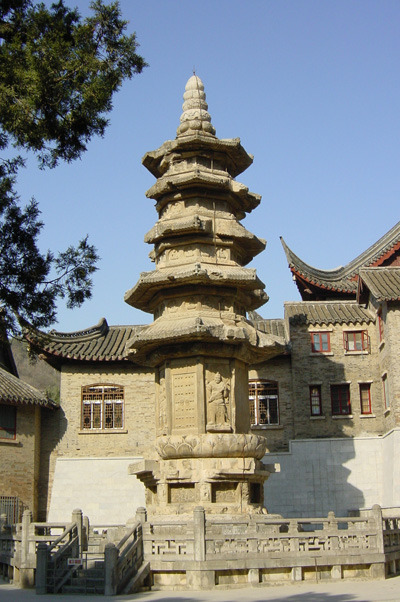
Sarira Pagoda.
Reliefs are carved on the exterior walls. On the base, there are various reliefs of the Buddha; also dragons, phoenixes, birds and flowers. On the body of the pagoda, there are carvings of the Heavenly Kings (four Buddhist gods who watch over the four cardinal points of the world), the Wenshu Buddha (Manjusri, the Buddha of Wisdom), and Puxian Buddha (Bodhisattva of Universal Benevolence) riding an elephant.

Base of the pagoda.

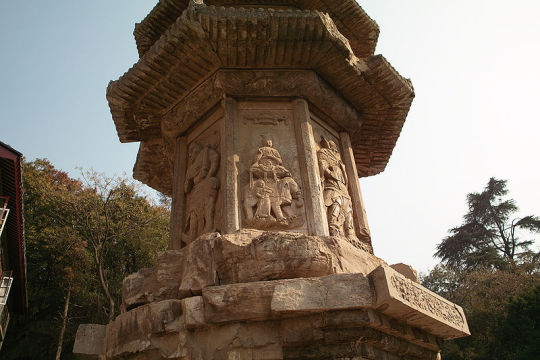

Carvings on the main body.
On each storey, there is a shrine with a Buddha. The base and finial are richly decorated with lotus motifs; the lotus is part of the imagery of the “Pure Land” school of Buddhism.
The Sakyamuni Pagoda was built in 1056, during the Liao Dynasty (907-1125), which ruled present-day Mongolia, part of the Russian Far East, northern Korea, and northern China. It was built by Emperor Daozong, who took the throne in 1055, and built on the site of his grandmother's family home. It is located on the central point of the Fogong Temple's main north-south axis (a common choice of location before the 700's).


The temple was built 85km south of Datong (the Liao Dynasty capital) in Shanxi province. It was originally called Baogong Temple, and was renamed Fogong Temple in 1315, during the Yuan Dynasty. During the Jin Dynasty (1115-1234), its grounds were said to be massive, but it declined during the Ming Dynasty (1368-1644).

Liao Dynasty (1025).
The pagoda is the tallest wooden building in the whole of China, and is the oldest-existing pagoda to be built entirely of wood. It is 67.3m tall – it stands on a 4m-tall base, and the steeple is 10m tall.
It has 54 different types of bracket sets (the most for any Liao Dynasty building), but this isn't noticeable from a distance, as its structure has a high level of harmony and unity. There is a mezzanine level between each outer storey.

Dougong of the pagoda.
From the outside, the pagoda seems to have only 5 stories, and the ground floor seems to have two sets of rooftop eaves. Actually, there are 9 stories inside, as indicated by the pagoda's exterior pingzuo (terrace balconies). [I'm not sure if these are the same as the mezzanine levels.] The lower set of rooftop eaves on the ground floor covers the skirting verandah.


The lowest set of eaves is supported by a ring of columns; there are also support columns inside. The pagoda is named because of the 11m-high statue of the Buddha Sakayumi on the ground floor. There is an ornate zǎojǐng (cassion) above its head, and also one zǎojǐng carved into the ceiling of each storey. The pagoda has a hexagonal base plan, but is 8-sided.
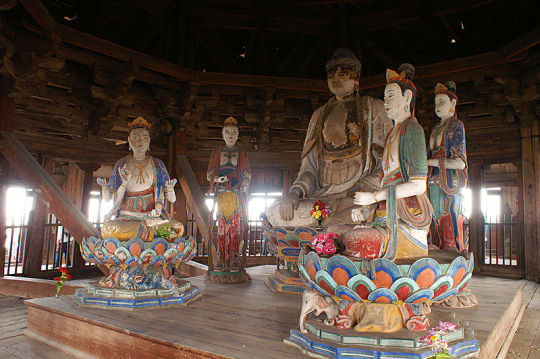
Ground floor.
A zǎojǐng (meaning literally “algae well”) is also called a cassion, cassion ceiling, and spider web ceiling. It is a feature of East Asian architecture, found usually in the ceilings of temples & palaces, and usually in the centre, right above the main throne, seat or religious figure (here, it is the statue of the Buddha). Usually, it is a sunken panel set into the ceiling, often layered & richly decorated. Circles, squares, hexagons, octagons, and combinations of those shapes are common.
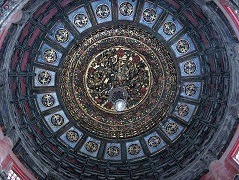
Cassion in the Forbidden City.
The Beisi Pagoda (also called the North Temple Pagoda) is located in the Bao'en Temple in Suzhou. The original pagoda was built in 1153, during the Song Dynasty (960-1279); the Buddhist monk Dayuan was in charge of its patronage and construction. The pagoda burned down near the end of the Song Dynasty, and was rebuilt during the Ming Dynasty (1368-1644). This is the pagoda that we have today.
It has an octagonal base, and is 76m tall. There used to be eleven stories, but it was damaged at some point and now there are only nine. It has double eaves and flying corners. The base and outside walls are made of brick, and the balustrades are made of stone. However, because it is wrapped with wooden cladding (the eaves and banisters are wooden), it looks like a timber structure from the outside.
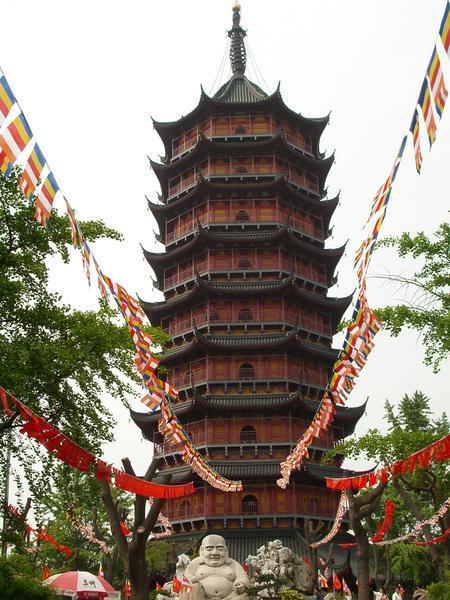

Kaiyuan Temple is located in Quanshou, in Fujian province (south-eastern China). Originally called Lotus Temple, it was built in 685-86, during the Tang Dynasty, and gained its present name in 738. It is a Hindu-Buddhist temple, and one of the few surviving Hindu temples in mainland China.
Two twin pagodas stand to either side of the temple, about 200m apart from each other; they are the highest twin pagodas in China. Renshou Pagoda is on the west side, and Zhenguo Pagoda on the east. They are octagonal plans, and their eave corners turn upwards dramatically, in typical southern style. Their elaborate bracket sets imitate woodwork.

Renshou Pagoda.

Zhenguo Pagoda.

Mahavira Hall (the temple’s main hall).
The first Renshou Pagoda was built in 916, during the Five Dynasties period (907-60), and made of wood. It burned down twice in the Song Dynasty (960-1279), and was rebuilt each time – first with brick, and then with stone. Both pagodas have the same appearance and structure. Renshou Pagoda is 44.6m high, the shorter of the two.
Zhengou Pagoda was built during the Xiantong Period (860-73) of the Tang Dynasty (618-907). It was destroyed in 1155 and rebuilt in 1186; then demolished again in 1227 and rebuilt in stone in 1238. It is 48.24m high, 18.5m in diameter, and each side is 7.8m wide.
It stands on a Sumeru pedestal (a type of substructure named after the mythical Mount Sumeru). This Sumeru pedestal is quite low, and carved with a tier of lotus flowers and a tier of grasses. A celestial guard shouldering the pedestal is carved on each of its eight corners; and its girdle is carved with 39 pictures, including tales about the Buddha, and images of dragons, lions and other animals. The pedestal is surrounded by stone railings, and has five steps cut into each of its four sides.
Four of the pagoda's walls have doors, and the other four have niches for Buddhist statues. On both sides of the doors, images of heavenly kings and celestial guards are carved. On both sides of the niches, images of Manjusri, Samantabhadra & other bodhisattvas are carved, as well as gods and Buddhist disciples. Some carry the sun and moon in their palms; others hold calabashes or sceptres.
Each storey has a verandah on the outside. The corners of each storey are cylindrical, which is rare in ancient architecture.
Inside, there is a central pillar, winding corridors, and staircases. Unlike most winding or vertical staircases in pagodas, these aren't built along the inside of the walls, or along the central pillar. Instead, they are installed through a square hole on one side of the pillar (the pillar is solid and has no compartments). The floors are made up of two layers, with a facing of stone strips, and are supported by stone beams.
The iron steeples are stylistically typical of multi-storeyed pagodas. Iron chains connect them to the corners of their roofs.
The White Dagoba is located at Miaoying Temple, which is also called the White Stupa Temple or White Dagoba Temple. The temple was built in the city of Dadu, and is now in Beijing's Xicheng District. Dagoba is Sinhalese for the Buddhist stupa, and the word shows the building's Tibetan origins.
In 1271, Kublai Khan united the country of China under the Yuan Dynasty (1271-1368), and Tibet also began to come under the Yuan Dynasty's power. To consolidate the relationship between the empire and Tibet (which was mostly under the rule of religious authorities), Kublai Khan ordered the White Dagoba to be built. The architect was Anigo, from Nepal.
The construction lasted from 1271-79. Then, Kublai Khan ordered a temple to be built around it. The area of the temple was 160,000m2, and this was decided by the Emperor firing four arrows in four directions from the top of the White Dagoba. The temple was called Dashengshou Wan'an Temple.
During the Yuan Dynasty, the temple was mostly used as an imperial temple. The governor ordered that all important ceremonies were to be rehearsed here three days ahead of time. When Kublai Khan died, his sacrificial ceremony was held here.
People called Dadu (the capital at the time) and the White Dagoba “Golden City and Jade Dagoba”. The temple was burned down in 1368, but the dagoba survived. In 1457, during the Ming Dynasty (1368-1644), Emperor Tianshun ordered the temple to be rebuilt. However, it was much smaller this time – about 13,000m2 – and it was renamed Miaoying Temple.

The current temple.
In the late Qing Dynasty (1644-1911), the Miaoying Temple was one of the most well-known locations for temple fairs, hence the saying, “August 8th, time to visit the white dagoba”. On October 25th (according to the lunar calendar), there was a custom of lamas walking around the dagoba, chanting scriptures and playing music. This is the anniversary of the dagoba's completion.
The Miaoying Temple consists mostly of the White Dagoba and four halls (which store Buddhist statues, classical Buddhist scriptures, five Buddhist crowns, flowery cassocks, fabrics, and other artifacts). The golden Dagoba Longevity Statue is the most famous – it is 5.4cm tall, and has over 40 rubies. The bronzy [?] Kwan-yin Boddhisattva Statue (with 1000 hands & eyes) is also very famous. These current halls are from the Qing Dynasty.
The White Dagoba is north of the Miaoying Temple. It has a 3-layered base, and the body looks like an upside-down ice-cream cone. On top of the body is a thick wooden base, upon which is a solid bronze canopy. This is supported by strong iron chains. On the very top is another small stupa.
It is made of white-washed brick, and is 48m tall. The borders of the dagoba [or the stupa on top?] are adorned with small Buddhist characters and statues, and wind chimes. This dagoba is the earliest and largest Tibetan dagoba in China.

The White Dagoba.
#book: a concise history of architectural styles#history#architecture#china#ancient china#tibet#chinese architecture#chinese pagodas#northern wei dynasty#liao dynasty#yuan dynasty#song dynasty#ming dynasty#tang dynasty#qing dynasty#quanshou#songyue pagoda#songyue monastery#sarira pagoda#qixia temple#sakyamuni pagoda#fogong temple#beisi pagoda#bao'en temple#kaiyuan temple#renshou pagoda#zhenguo pagoda#white dagoba#miaoying temple
34 notes
·
View notes
Photo

👌(在 Wenshu Buddhist Monastery) https://www.instagram.com/p/CGSPvPTHE_K/?igshid=bfzdr1x67654
0 notes
Photo

The antique market near hostel | www.chengduhostel.com(在 Wenshu Monastery) https://www.instagram.com/p/B_NoS6YlDI7/?igshid=1vxhy1bpp85zg
0 notes
Photo

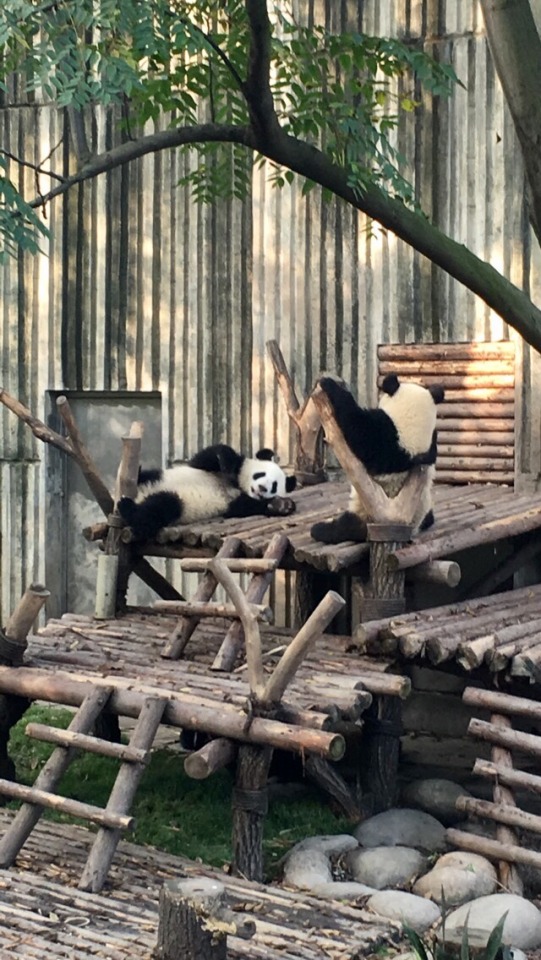
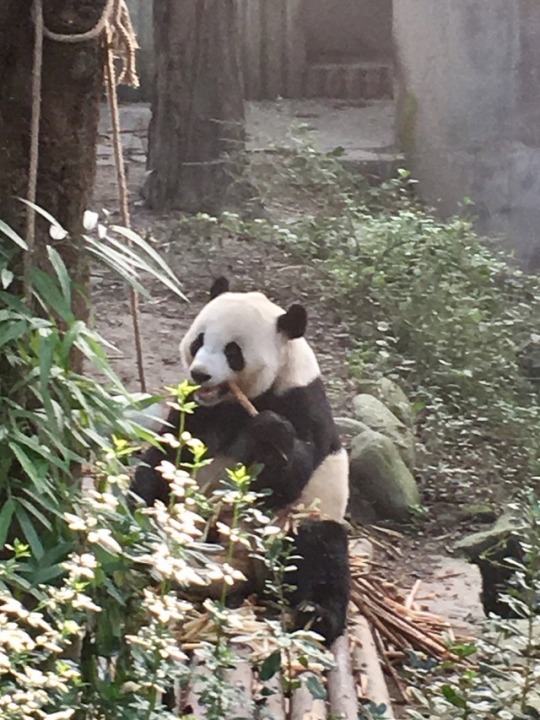
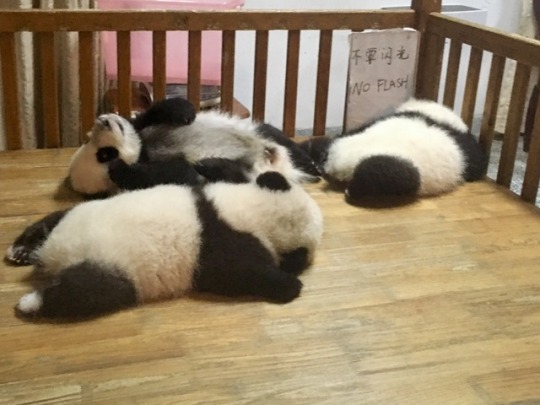
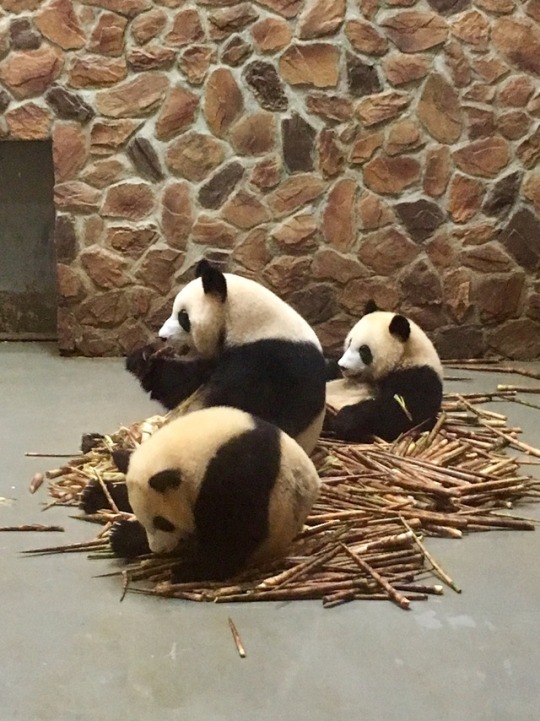


M3- W2- Day 5: Today was fab! We went to Chengdu Panda Breeding Research Centre that's home to over 100 giant pandas 🐼 they were all so adorable! After, we went to see Wenshu Monastery and the People's Park which was really cool! There were grannies dancing away, bands playing, people singing, food stalls, amazing gardens and even 'dating lane' where Chinese parents go to advertise their single child and hope to find them a husband/wife...without their child knowing!
6 notes
·
View notes
Text

A temple at the Wenshu Buddhist monastery in Chengdu.
0 notes
Text
The first days
Hey Guys,
I'm in Chengdu for a couple of days already. Tomorrow university will start. The first couple of days I went sightseeing a bit :D
I went to some of the most famous tourists spots like Tianfu square (天府广场)an underground shopping Mall with a lot of food stalls and cute little shops. You can do a lot of handcrafts there as well. Or the Chunxi Road (春熙路) a modern shopping street. Close to the Chunxi Road is the biggest shopping mall in Chengdu, the IFS, they put a giant panda figure on the outside wall and I went to the rooftop where you can see the head of that figure. More to my likings is the shopping area Taikooli which is build around a temple nd combines modern with historical elements and has it's totally own flair.
But I didn't just spent my time exploring the modern sites of Chengdu since I was searching for an own apartment I strolled through a lot of living areas. It was interesting and actually I found a nice small flat. But I also spent some time to visit some more historical sites, like the Wenshu monastery, a still active Buddhist monastery, with a beautiful garden. You can get lunch in the vegetarian restaurant or enjoy some of the tea they offer for free. I also like the wide and narrow Alley (宽窄巷子) a couple of historical streets with a lot of food, small cute shops and way too many people. I still like the atmosphere there. Close to the wide and narrow Alley is the People's park (人民公园) a beautiful park with a lake. I have to go back there and enjoy some traditional tea in the Teahouse. The Chinese people enjoy to do a lot of outdoor activities there, like dancing or doing outside karaoke. I really enjoyed strolling through that park a bit.
Later this day I will get some Sichuan Hotpot with some other exchange student. Really excited about that. I will make a post about food soon :D
Pictures: People's Park, Tianfu square, Sichuan University North gate, Wenshu Monastery, People's Park, Wenshu Monastery garden, IFS rooftop, IFS, Taikooli, Wide and narrow Alley

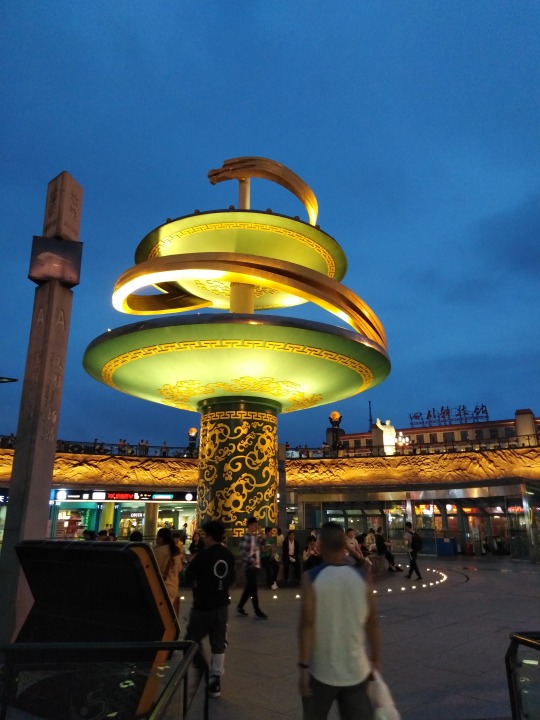
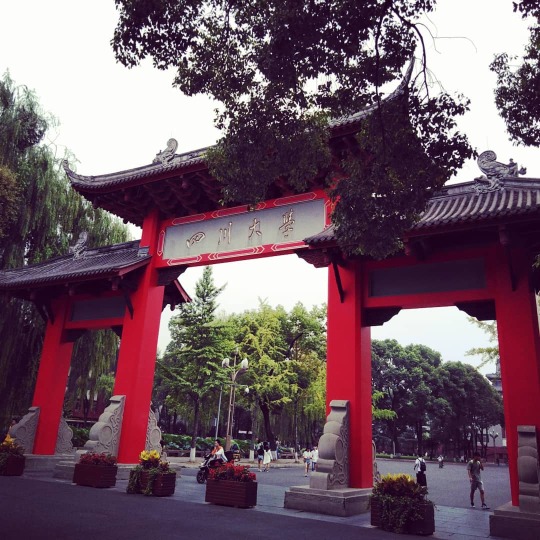







1 note
·
View note
Photo

Lotus flower at Wenshu Monastery and Buddhist Temple. #lotus #china #chengdu #tourist #sightseeing #travel #flower #lotusflower (at Wenshu Monastery)
2 notes
·
View notes
Photo


60 DAYS OF 汉语 // 2017 年 5 月 18 日
#tbt We visited Chengdu during the May Day weekend. We visited the Chengdu Research Base of Giant Panda Breeding, Tianfu Square, the Wenshu Monastery, various teahouse, and attended a dumpling making class, amongst other things! I would definitely recommend a visit, and our hostel - Chengdu Lazybones Poshpacker - was really nice!
I found the people in Chengdu easier to understand than the locals in Chongqing, who have a strong accent and their own local dialect. Native Chongqingers (Chongqingians?) often don’t say the sh, ch initial, instead say s, c, etc., - for me, this makes numbers (price, cost especially) difficult to determine because of shí (10 十) and sì (4 四), so be wary!
#60dh#GenUKChina#StudyWorkCreate#BritishCouncil#studyblr#studyspo#langblr#mandarin#chinese#chongqing#tbt#journal
5 notes
·
View notes
Photo

Tang Dynasty Monastery dedicated to Wenshu the Bodhisattva of Wisedom. A very serene place with an active modern library below 😉 #architecture #china #monasteries #buddhism #travels #nationalgeographic #photooftheday #sichuan (at Wenshu Monastery)
1 note
·
View note
Text
10 อันดับโรงแรมในเมืองเฉิงตู (Chengdu) เมืองเอกแห่งมณฑลเสฉวน
10 อันดับโรงแรมในเมืองเฉิงตู (Chengdu) เมืองเอกแห่งมณฑลเสฉวน
แหล่งท่องเที่ยวสีเขียวชื่นชมอารยธรรมวัฒนธรรมโบราณ ที่ประมาณความงานไม่ได้ ในเมืองเฉิงตู ซึ่งต้องให้นิยามกับเมืองแห่งนี้ เต้นแบบนี้เลยทีเดียวแล้วค่ะคุณเพราะที่นี่เขาเป็นเมืองท่องเที่ยวในมณฑล เสฉวนที่เต็มไปด้วยความงดงามทางธรรมชาติและยังมีวัดวาอารามต่างๆมากมาย เป็นวัดเก่าแก่ที่ยังคงความสวยงามท่ามกลางธรรมชาติ…
View On WordPress
#Chengdu Flipflop Hostel Poshpacker (Chunxi Road Metro Station)#chengdu hotel pantip#Chengdu Lazybones Hostel Boutique Poshpacker (Wenshu Monastery)#chengdu pantip#Chengdu Wenjun Mansion Hotel (Kuanzhai xiangzi Branch)#Grand Hyatt Chengdu#Holiday Inn Express Gulou Chengdu#Niccolo Chengdu#Sam Cozy Hotel#T&Fsuites#Travelling With Hotel Chengdu#ที่พัก เฉิงตู pantip#ที่เที่ยวเฉิงตู#เฉิงตู pantip 2018#เฉิงตู พักที่ไหนดี#เฉิงตู พักย่านไหนดี#เฉิงตู ฤดู#เที่ยว เฉิ ง ตู 2018#เที่ยวเฉิงตู 2018#เที่ยวเฉิงตู 2019#โรงแรม เฉิงตู#โรงแรม เฉิงตู pantip
0 notes
Photo

经幢(在 Wenshu Buddhist Monastery) https://www.instagram.com/p/CGCfd9JHbZQ/?igshid=srcrd48alfzb
0 notes
Photo

Wenshu monastery near Mix Hostel and Lazybones Hostel | www.chengduhostel.com(在 Wenshu Monastery) https://www.instagram.com/p/B_NoBuMF2F6/?igshid=1kyftsoinjsvj
0 notes



